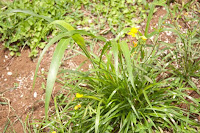End of the year cleaning
It was always the end of the year that we did cleaning where we normally don't get to. Things like windows, walls, under tatami mat, etc, and even where we normally clean, we paid extra attention to do deep cleaning. Having learned from the last few years mistakes, we started cleaning early this year. Perhaps it just coincided with our construction project clean up and just kept going. Now we are about 2 weeks into deep cleaning. Basically we took everything out of our tea processing space and cleaned every corner of the space and even applied fresh coat of paint. Also, work shop space was re-organized with extra metal shelves. Even all the extra cleaning effort, more craps keep coming out. It's just amazing to see how much crap piling we normally do.





